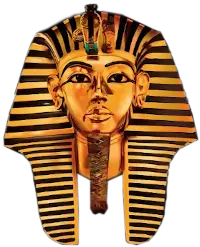
and probably in Australia. These were some of the places:--(a) Palestine at Mt. Carmel (b) Syria at Mt. Herman in Lebanon (c) Babylon (d) Media, near the Red Sea (e) India, on the banks of the Ganges (f) Burma (g) Athens (h) Rome (i) Croton (j) Rhodes (k) Delphi (l) Miletus (m) Cyprus (n) Corinth (o) Crete (p) Central and South America, especially Peru (q) Among the American Indians and among the Mayas, Aztecs and Incas of Mexico. Read Encyclopaedia of Religion and Ethics by Jas. Hastings; Lives of Eminent Philosophers by Diogenes Laertius; and History of Philosophy by Thomas Stanley. The discovery of the ruins of Luxor on the banks of the Nile and the organization of the Egyptian Mysteries into a Grand Lodge with minor lodges throughout the ancient world are evidence that Egypt was the cradle of the Mysteries and of the Masonic Brotherhood.
(3) The rebuilding of the temple of Delphi
This temple was burnt down in 548 B.C. by the Greeks who were always hostile towards the Egyptian Mysteries. The Brethren tried at first to raise funds from the native Greeks but failed in their attempt. They then decided to approach the Grand Master Amasis King of Egypt, who unhesitatingly donated three times as much as was needed for the purpose. This act of King Amasis shows the universality of the brotherhood of the Egyptian Mysteries and of Free Masonry. Read Sandford's Mediterranean World, p. 135 and 139; also John Kendrick's Ancient Egypt, Bk. II, p. 363.
(4) The abolition of Greek philosophy together with the Egyptian Mysteries
Identical effects proceed from identical causes. Therefore the edicts of Theodosius in the 4th century A.D. and of Justinian in the 6th century A.D., which closed down the Egyptian Mysteries, simultaneously had the same effect upon Greek philosophy, and proved the identity between them. Read The Ecclesiastical edicts of the Theodosian Code by W. K. Boyd; also Mythology of Egypt by Max Muller, c. 13, p. 241-245; also Sandford's Mediterranean World, p. 508, 548, 552-568.
(5) The Statue of the Egyptian Goddess Isis with Her Child Horns in Her arms
This was the first Madonna and Child of human history. It was a Black Madonna and Child. Read Max Muller's Mythology of Egypt, c. 13, p. 241-245; also Sandford's Mediterranean World, p. 552-568. Remember that the name Egyptian is a Greek word Aiguptos which means Black, and that primitive man visualized God in terms of his own attributes and this included colour.
Topics
Greek Philospohy is Stolen Egyptian Philosophy
The Memphite Theology is the Basis of all Important Doctrines of Greek Philosophy
Greek Philosophy was Alien to the Greeks
Greek Philosophy was the offspring of the Egyptian Mystery System
The Egyptians Educated the Greeks
The Curriculum of the Egyptian Mystery System
The Pre-Socratic Philosophers and the teaching Ascribed to them
The Athenian Philosophers
1. Socrates
2. Plato
3. Aristotle